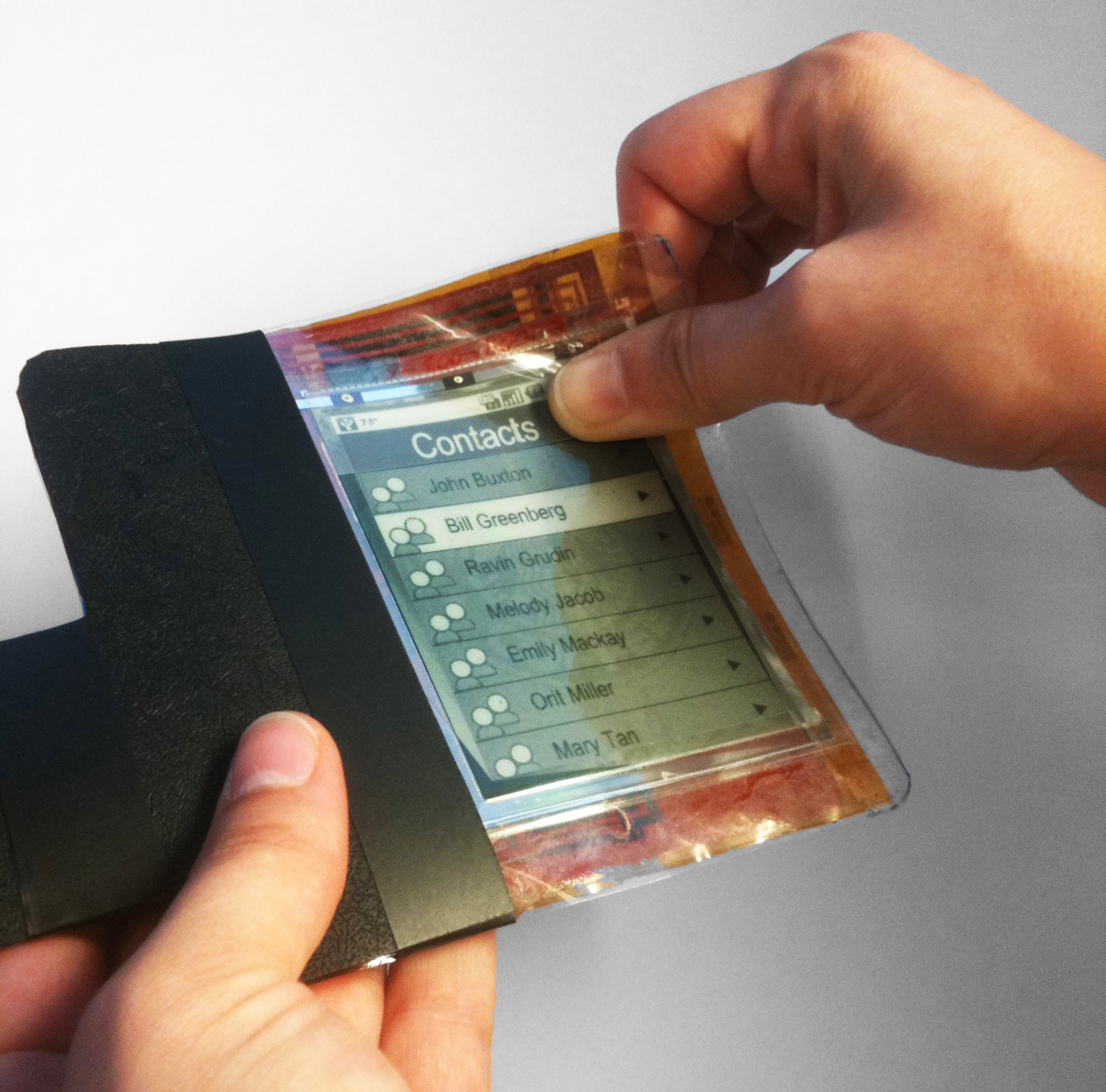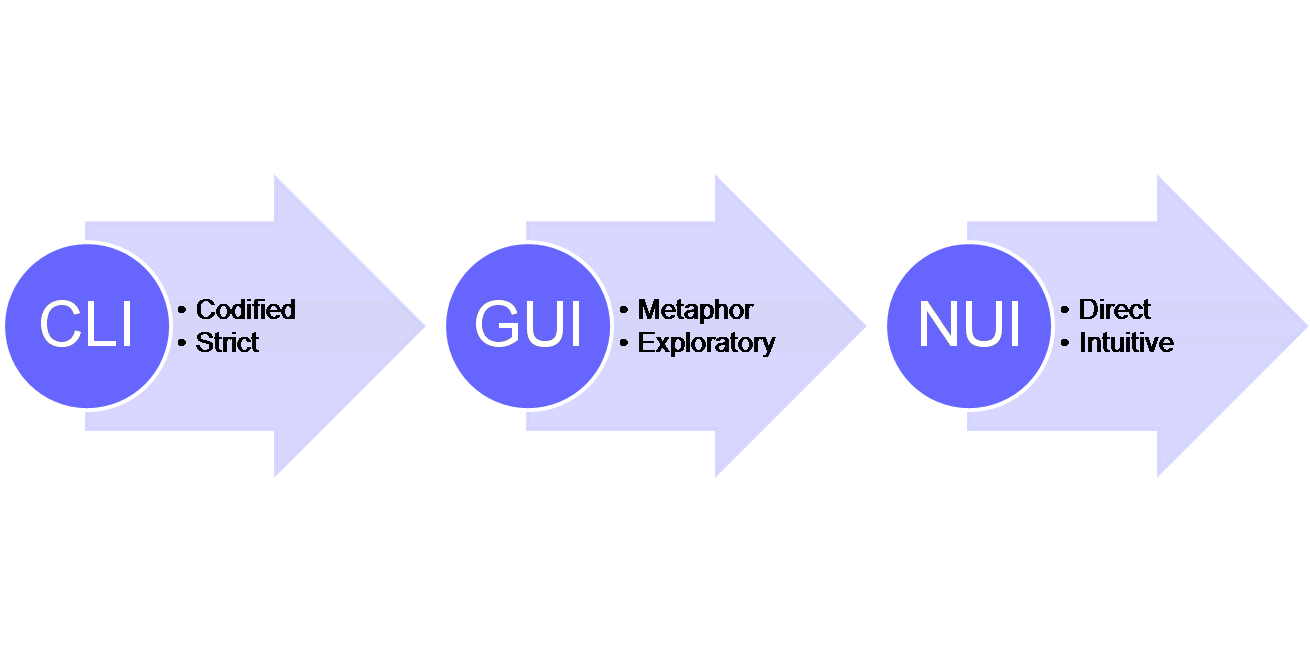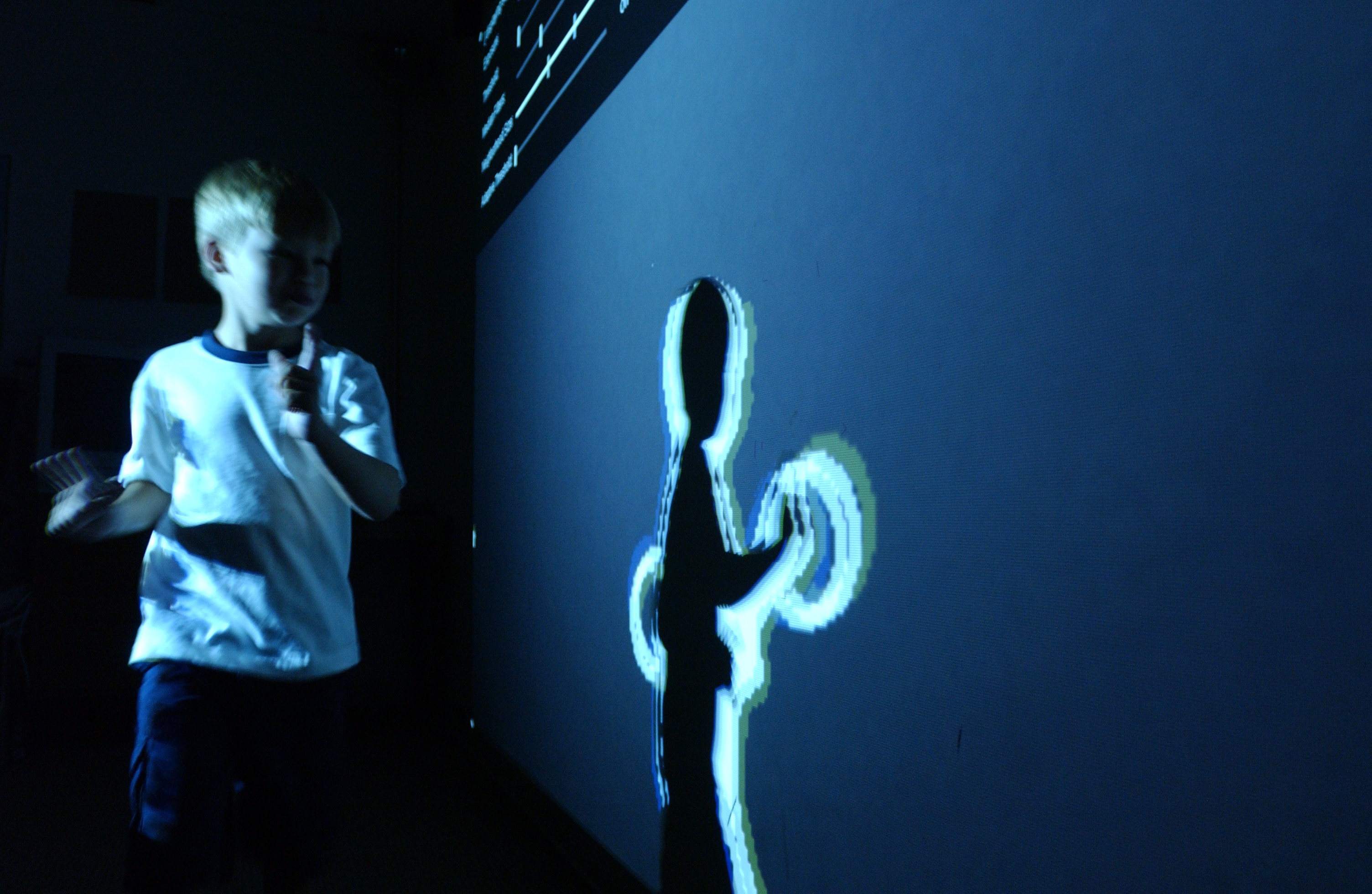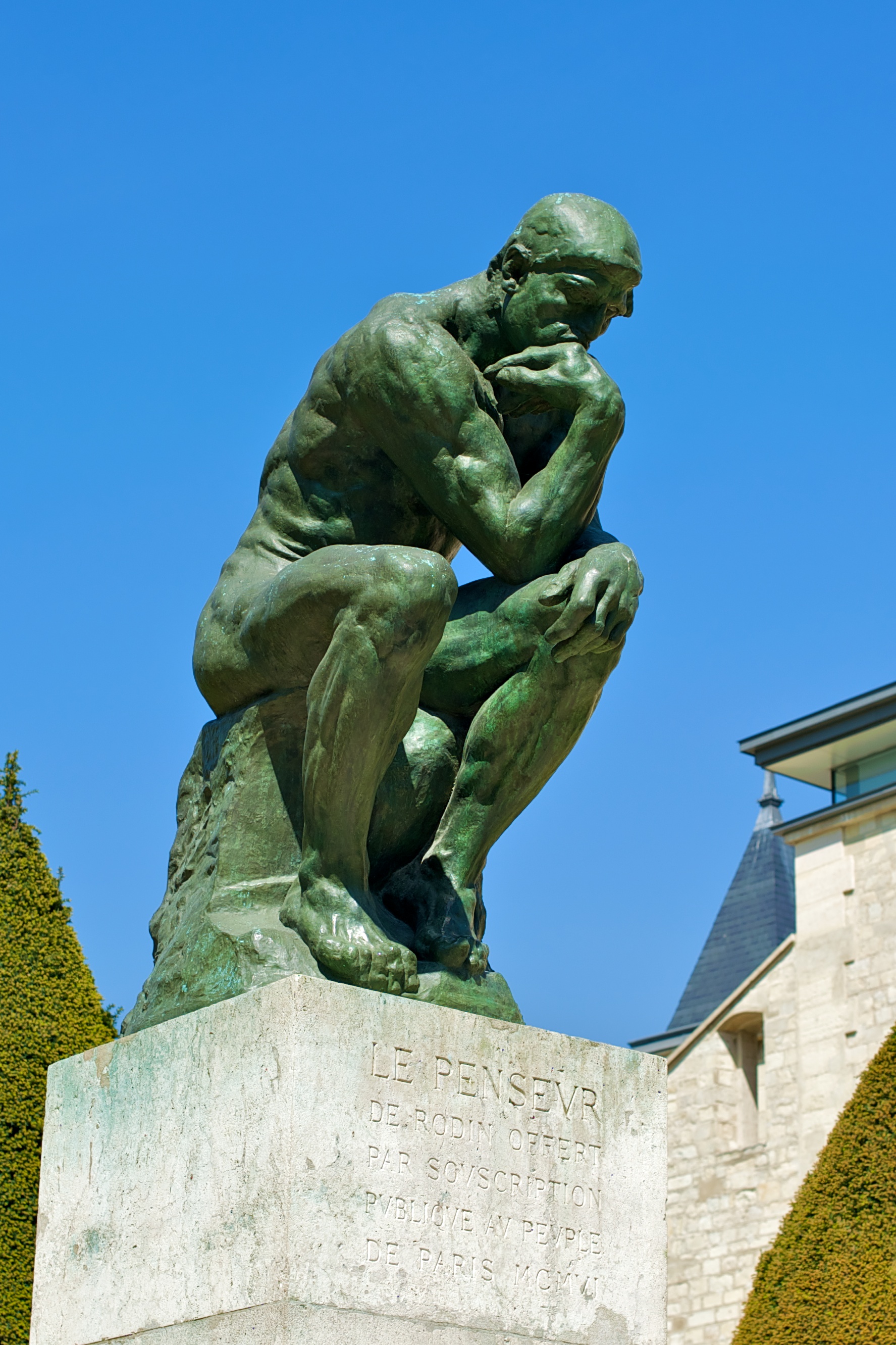|
Tangible User Interface
A tangible user interface (TUI) is a user interface in which a person interacts with digital information through the physical environment. The initial name was Graspable User Interface, which is no longer used. The purpose of TUI development is to empower collaboration, learning, and design by giving physical forms to digital information, thus taking advantage of the human ability to grasp and manipulate physical objects and materials. One of the pioneers in tangible user interfaces is Hiroshi Ishii, a professor at the MIT who heads the Tangible Media Group at the MIT Media Lab. His particular vision for tangible UIs, called ''Tangible Bits'', is to give physical form to digital information, making bits directly manipulable and perceptible. Tangible bits pursues the seamless coupling between physical objects and virtual data. Characteristics # Physical representations are computationally coupled to underlying digital information. # Physical representations embody mechan ... [...More Info...] [...Related Items...] OR: [Wikipedia] [Google] [Baidu] |
Reactable Multitouch
The Reactable is an electronic musical instrument with a tabletop tangible user interface that was developed within the Music Technology Group at the Universitat Pompeu Fabra in Barcelona, Spain by Sergi Jordà, Marcos Alonso, Martin Kaltenbrunner and Günter Geiger. In late 2010, a mobile version of the Reactable was released for iOS. Basic operation The Reactable is a round translucent table, used in a darkened room, and appears as a backlit display. By placing blocks called ''tangibles'' on the table, and interfacing with the visual display via the tangibles or fingertips, a virtual modular synthesizer is operated, creating music or sound effects. Tangibles There are various types of tangibles representing different modules of an analog synthesizer. Audio frequency VCOs, LFOs, VCFs, and sequencers are some of the commonly used tangibles. There are also tangibles that affect other modules: one called ''radar'' is a periodic trigger, and another called ''tonalizer'' li ... [...More Info...] [...Related Items...] OR: [Wikipedia] [Google] [Baidu] |
Multi-touch
In computing, multi-touch is technology that enables a surface (a touchpad or touchscreen) to recognize the presence of more than one point of contact with the surface at the same time. The origins of multitouch began at CERN, MIT, University of Toronto, Carnegie Mellon University and Bell Labs in the 1970s. CERN started using multi-touch screens as early as 1976 for the controls of the Super Proton Synchrotron. Capacitive multi-touch displays were popularized by Apple's iPhone in 2007. Plural-point awareness may be used to implement additional functionality, such as pinch to zoom or to activate certain subroutines attached to predefined gestures. Several uses of the term multi-touch resulted from the quick developments in this field, and many companies using the term to market older technology which is called '' gesture-enhanced single-touch'' or several other terms by other companies and researchers. Several other similar or related terms attempt to differentiate between ... [...More Info...] [...Related Items...] OR: [Wikipedia] [Google] [Baidu] |
User Interfaces
In the industrial design field of human–computer interaction, a user interface (UI) is the space where interactions between humans and machines occur. The goal of this interaction is to allow effective operation and control of the machine from the human end, while the machine simultaneously feeds back information that aids the operators' decision-making process. Examples of this broad concept of user interfaces include the interactive aspects of computer operating systems, hand tools, heavy machinery operator controls and process controls. The design considerations applicable when creating user interfaces are related to, or involve such disciplines as, ergonomics and psychology. Generally, the goal of user interface design is to produce a user interface that makes it easy, efficient, and enjoyable (user-friendly) to operate a machine in the way which produces the desired result (i.e. maximum usability). This generally means that the operator needs to provide minimal input t ... [...More Info...] [...Related Items...] OR: [Wikipedia] [Google] [Baidu] |
Organic User Interface
In human–computer interaction, an organic user interface (OUI) is defined as a user interface with a non-flat display. After Engelbart and Sutherland's graphical user interface (GUI), which was based on the cathode ray tube (CRT), and Kay and Weiser's ubiquitous computing, which is based on the flat panel liquid-crystal display (LCD), OUI represents one possible third wave of display interaction paradigms, pertaining to multi-shaped and flexible displays. In an OUI, the display surface is always the focus of interaction, and may actively or passively change shape upon analog (i.e., as close to non-quantized as possible) inputs.Roel Vertegaal and Ivan PoupyrevOrganic User Interfaces: Introduction Communications of the ACM 51(6), 26–30, June 2008. These inputs are provided through direct physical gestures, rather than through indirect point-and-click control. Note that the term "Organic" in OUI was derived from organic architecture, referring to the adoption of natural for ... [...More Info...] [...Related Items...] OR: [Wikipedia] [Google] [Baidu] |
Natural User Interface
In computing, a natural user interface (NUI) or natural interface is a user interface that is effectively invisible, and remains invisible as the user continuously learns increasingly complex interactions. The word "natural" is used because most computer interfaces use artificial control devices whose operation has to be learned. Examples include voice assistants, such as Alexa and Siri, touch and multitouch interactions on today's mobile phones and tablets, but also touch interfaces invisibly integrated into the textiles furnitures. An NUI relies on a user being able to quickly transition from novice to expert. While the interface requires learning, that learning is eased through design which gives the user the feeling that they are instantly and continuously successful. Thus, "natural" refers to a goal in the user experience – that the interaction comes naturally, while interacting with the technology, rather than that the interface itself is natural. This is contrasted with th ... [...More Info...] [...Related Items...] OR: [Wikipedia] [Google] [Baidu] |
Kinetic User Interface
Gesture recognition is a topic in computer science and language technology with the goal of interpreting human gestures via mathematical algorithms. It is a subdiscipline of computer vision. Gestures can originate from any bodily motion or state, but commonly originate from the face or hand. Focuses in the field include emotion recognition from face and hand gesture recognition, since they are all expressions. Users can make simple gestures to control or interact with devices without physically touching them. Many approaches have been made using cameras and computer vision algorithms to interpret sign language, however, the identification and recognition of posture, gait, proxemics, and human behaviors is also the subject of gesture recognition techniques. Gesture recognition can be seen as a way for computers to begin to understand human body language, thus building a better bridge between machines and humans than older text user interfaces or even GUIs (graphical user int ... [...More Info...] [...Related Items...] OR: [Wikipedia] [Google] [Baidu] |
Hardware Interface
Components of an electrical circuit are electrically connected if an electric current can run between them through an electrical conductor. An electrical connector is an electromechanical device used to create an electrical connection between parts of an electrical circuit, or between different electrical circuits, thereby joining them into a larger circuit. Most electrical connectors have a genderi.e. the male component, called a ''plug'', connects to the female component, or ''socket''. The connection may be removable (as for portable equipment), require a tool for assembly and removal, or serve as a permanent electrical joint between two points. An adapter can be used to join dissimilar connectors. Thousands of configurations of connectors are manufactured for power, data, and audiovisual applications. Electrical connectors can be divided into four basic categories, differentiated by their function: * ''inline'' or ''cable'' connectors permanently attached to a cable, so ... [...More Info...] [...Related Items...] OR: [Wikipedia] [Google] [Baidu] |
Digital Data
Digital data, in information theory and information systems, is information represented as a string of discrete symbols each of which can take on one of only a finite number of values from some alphabet, such as letters or digits. An example is a text document, which consists of a string of alphanumeric characters . The most common form of digital data in modern information systems is '' binary data'', which is represented by a string of binary digits (bits) each of which can have one of two values, either 0 or 1. Digital data can be contrasted with ''analog data'', which is represented by a value from a continuous range of real numbers. Analog data is transmitted by an analog signal, which not only takes on continuous values, but can vary continuously with time, a continuous real-valued function of time. An example is the air pressure variation in a sound wave. The word ''digital'' comes from the same source as the words digit and ''digitus'' (the Latin word for '' ... [...More Info...] [...Related Items...] OR: [Wikipedia] [Google] [Baidu] |
Icon (computing)
In computing, an icon is a pictogram or ideogram displayed on a computer screen in order to help the user navigate a computer system. The icon itself is a quickly comprehensible symbol of a software tool, function, or a data file, accessible on the system and is more like a traffic sign than a detailed illustration of the actual entity it represents. It can serve as an electronic hyperlink or file shortcut to access the program or data. The user can activate an icon using a mouse, pointer, finger, or recently voice commands. Their placement on the screen, also in relation to other icons, may provide further information to the user about their usage. In activating an icon, the user can move directly into and out of the identified function without knowing anything further about the location or requirements of the file or code. Icons as parts of the graphical user interface of the computer system, in conjunction with windows, menus and a pointing device (mouse), belong to the mu ... [...More Info...] [...Related Items...] OR: [Wikipedia] [Google] [Baidu] |
Embodied Design
Embodied design grows from the idea of embodied cognition: that the actions of the body can play a role in the development of thought and ideas.Sam McNerney "Embodied Cognition and Design: A New Approach and Vocabulary" (2013)Dor Abrahamson, and Robb Lindgren "Embodiment and Embodied Design." Accessed May 7, 2014. http://ccl.northwestern.edu/papers/2014/AbrahamsonLindgren-embodiment-and-embodied-design-in-press_.pdf (In Press) Embodied design brings mathematics to life; studying the effects of the body on the mind, researchers learn how to design objects and activities for learning.Martha W. Alibali & Mitchell J. Nathan "Embodiment in Mathematics Teaching and Learning: Evidence From Learners' and Teachers' Gestures (2011) Embodiment is an aspect of pattern recognition in all fields of human endeavor. Embodied design has an increasing role in mathematics education. Designers can use embodied cognition as a tool to study human behavior and create user-centered designs. Embodied des ... [...More Info...] [...Related Items...] OR: [Wikipedia] [Google] [Baidu] |
Cognitive Load Theory
In cognitive psychology, cognitive load refers to the amount of working memory resources used. There are three types of cognitive load: ''intrinsic'' cognitive load is the effort associated with a specific topic; ''extraneous'' cognitive load refers to the way information or tasks are presented to a learner; and ''germane'' cognitive load refers to the work put into creating a permanent store of knowledge (a schema). Cognitive load theory was developed in the late 1980s out of a study of problem solving by John Sweller. Sweller argued that instructional design can be used to reduce cognitive load in learners. Much later, other researchers developed a way to measure perceived mental effort which is indicative of cognitive load. Task-invoked pupillary response is a reliable and sensitive measurement of cognitive load that is directly related to working memory. Information may only be stored in long term memory after first being attended to, and processed by, working memory. Worki ... [...More Info...] [...Related Items...] OR: [Wikipedia] [Google] [Baidu] |
Embodied Cognition
Embodied cognition is the theory that many features of cognition, whether human or otherwise, are shaped by aspects of an organism's entire body. Sensory and motor systems are seen as fundamentally integrated with cognitive processing. The cognitive features include high-level mental constructs (such as concepts and categories) and performance on various cognitive tasks (such as reasoning or judgment). The bodily aspects involve the motor system, the perceptual system, the bodily interactions with the environment (situatedness), and the assumptions about the world built into the organism's functional structure. The embodied mind thesis challenges other theories, such as cognitivism, computationalism, and Cartesian dualism. It is closely related to the extended mind thesis, situated cognition, and enactivism. The modern version depends on insights drawn from up to date research in psychology, linguistics, cognitive science, dynamical systems, artificial intelligence, robot ... [...More Info...] [...Related Items...] OR: [Wikipedia] [Google] [Baidu] |








